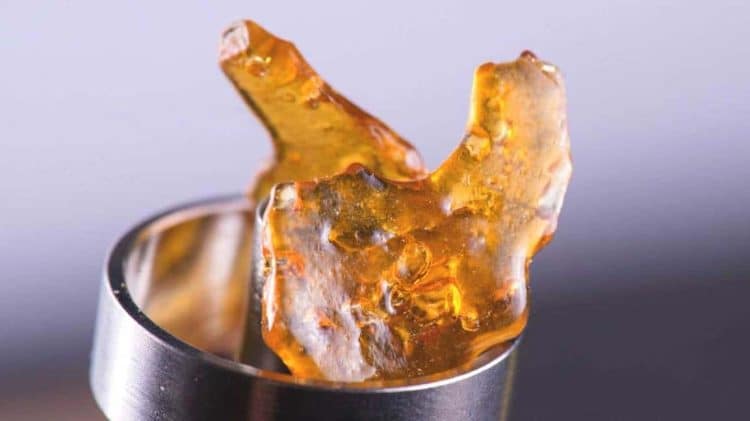Although flower might have been the only option for my parents, today, cannabis users have a vast multitude of options when it comes to cannabis consumption. Nowadays one can choose between edibles, beverages, and smokable concentrates and extracts in all their manifestations.
Needless to say, there certainly isn’t a lack of options. Today’s focus will be on just one of them: dabbing.
To start, what exactly is dabbing? Dabbing is an increasingly popular method of cannabis vaporization that uses a specific set of equipment. [1] The essential items being: a rig, nail, dabbing tool, and torch.
The Rig
At its simplest definition, a rig is a specialized water pipe or bong that is designed exclusively for concentrates. The thing that makes the rig specialized in comparison to a standard bong lies in the nail. [2] Rigs can differ greatly in shape, material, and size, ranging from small silicon rigs to custom handcrafted ones with price tags well into thousands of dollars. Ultimately, a person’s choice in their rig is purely subjective.
Nails
The nail is where the action happens, so to speak. An essential part of the dabbing process – nails consist of a heatable surface with an air passageway. In addition, nails can either be domed or dome-less, the major difference being that ‘domed’ systems allow concentrate vapors to be trapped, thus preventing any from going to waste.
Unlike a bowl, nails are designed to reach temperatures between 1000°F to 1500°F in order to melt down and vaporize concentrates for inhalation through a rig. That being said, many dabbing enthusiasts argue that dabbing at lower temperatures, between 350°F to 400°, are optimal. Most nails on the market today are either made of quartz or titanium; but, some cannabis users have become concerned with titanium oxidization due to high temperatures which in turn leads to degradation.
The Dabber Tool
So, we have our rig and nail. What’s next? We will need an instrument which allows us to apply the concentrate to the nail. Enter the dabber tool – also known as a wand or pick. [2] Dabber tools are traditionally made of ceramic, quartz, glass, or titanium. The choice of which to use also comes down to personal preference.
The Torch
The torch is the last crucial piece for our list of dabbing essentials. Torches of course differ in size and chosen solvent – i.e. some torches use propane while others use butane.
Differences aside, the ultimate underlying point is that a direct, large source of heat is needed to adequately heat up the nail to vaporize the dab.
Wrapping Up
Dabbing’s increasing popularity comes with an important disclaimer. Mainly, that it should be done responsibly and carefully due to the fact that the user is working with flammable and thermally conductive materials which can hold heat with relative ease.
References
- Raber, J.C., et al. “Understanding dabs: contamination concerns of cannabis concentrates and cannabinoid transfer during the act of dabbing”. J Toxicol Sci. 2015; 40(6): 797-803 [Times cited = 78, Journal impact factor = 1.719].
- Stogner, J.M. and Miller, B.L. “Assessing the Dangers of “Dabbing”: Mere Marijuana or Harmful New Trend?” Pediatrics. 2015; 136(1): 2 [Times cited = 57, Journal impact factor = 5.705]
Photo courtesy of Healthline
Could you provide some examples of temps?












